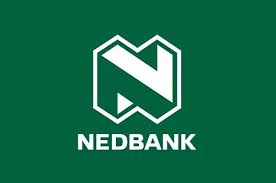4 Online Marketing Strategies Every Small Business Should Try
In a 2018 Deloitte study commissioned by Google, “digitally advanced small businesses” saw twice as much revenue per employee than those that didn’t leverage online marketing or ecommerce.
It’s been five years since that study, and it’s safe to say that online tools are only getting more effective.
If you want big success for your small business, finding the right online strategy will play a big part in taking you there.
The same study said that 80% of small businesses were not fully leveraging available technology.
If this sounds like your business, this article can help jump-start your online marketing efforts.
The great news is that you don’t need to be a digital marketing expert to implement a lucrative online marketing strategy—you just need the right tools in your toolkit.
What Is Online Marketing?
Online marketing, AKA digital marketing, uses online platforms and digital technologies to promote products or services. In other words, it’s everything you do to help people find your business online.
From a website to a business’s online branding assets, a spectrum of tactics fall under online marketing including:
- Digital advertising
- Email marketing
- Online promotions
- Blogging
- Social media marketing
- And a lot more
However, small businesses don’t always have the option to adopt the same expensive marketing approaches that big businesses with large budgets employ.
Therefore, we’ll focus on budget-friendly options that are both effective and useful for small businesses.
1. Setting the Stage for Your Online Marketing Approach
Before you execute online marketing strategies for your small business, you should develop a game plan.
This plan should outline what you want to achieve, who you’re trying to reach, and how to go about doing this online.
This ensures your marketing actions are targeted and impactful.
2. Identify Your Business Goals
Setting clear goals is the foundation of any successful marketing campaign. Goals give you direction and help you stay on course.
Goal setting should be clear and actionable, with measurable results. Start by defining what you want to achieve online—for example, boosting website traffic, increasing social media followers, or building your reputation.
Consider the SMART method of goal setting.
Next, determine how you can measure these goals. Often, business owners can measure goals by establishing baselines and determining key performance indicators (KPIs). Relevant KPIs will depend on the goal you set.
Some examples of a small business online marketing KPIs could be:
- Appointments made through the website
- Online orders/purchases
- Website traffic
- Search engine rankings
- Social media engagement
Google is an excellent starting point for tracking your website’s performance. Google Analytics and Google Search Console are free tools that provide valuable insights into your site’s traffic and user behavior.
Think about what’s most important to your business. How do you get more leads and customers? Your KPIs should tie in directly to getting more customers or more revenue from each customer.
Consider an example bakery that offers online ordering. If the bakery wants more orders, it can aim to increase website traffic by 20% in the next quarter. Then the business owner could focus on improving the store’s online presence to get more online orders.
Semrush has numerous free tools to get you started on website visibility, such as On-Page SEO Checker. This tool can help you monitor and support your website’s search engine optimization (SEO) to get more website traffic from search engines.
3. Understand Your Target Audience
Knowing your target audience informs your small business strategy. It’s not just who they are but also how they spend their time, what they value, and how they behave online.
In our bakery example, this means determining not just that the audience is locals who enjoy baked goods but also preferences that can guide niches.
For example, do they like gluten-free and organic options, or are they interested in elaborate decorations? Understanding these preferences can help you drive market strategy and fill gaps in consumer demand.
Google Analytics can go a long way in helping you understand your consumer’s behavior online. If you need help configuring Google Analytics, check out Google Analytics for Beginners: Getting Started with GA4.
In addition, Semrush’s Audience Intelligence app can help you tap into your audience’s online behavior and preferences by showcasing demographics, interests, content engagement, online habits, and purchasing behavior.
The Audience Intelligence app also reveals potential social media creators your audience trusts, allowing you to uncover the most relevant channels, media outlets, and social networks to reach your audience.
Once you have an understanding of your target audience, it should be easier to select your online marketing channels.
4. Choose Your Business’s Online Marketing Channels
Before considering the digital marketing strategies for your small business, let’s review the digital marketing channels that can be leveraged to reach your audience.
Video Marketing
Video marketing involves creating and sharing videos to promote your products or services and engage your target audience. Videos help demonstrate how to use a product, share customer testimonials, or tell your brand’s story memorably. With videos, you can get more attention from YouTube, TikTok, Instagram, and other channels.
Email Marketing
Email marketing encompasses sending targeted and personalized messages to your audience via email. This can include newsletters, promotional offers, and product announcements.
Content Marketing
Content marketing applies to creating and sharing valuable content to attract and engage your audience. This practice can combine multiple content formats (like videos, email marketing, blog posts, ebooks, infographics, and podcasts) in cohesive, cross-channel campaigns. The goal is to provide helpful information that solves your audience’s problems, establishes your brand as an authority in your niche, and builds trust with your clientele.
Search Engine Optimization
SEO includes optimizing your website and online content to rank higher on Google or other search engine results pages (SERPs). The closer your business ranks to the top, the more likely it is to be seen. Usually, content marketing and SEO go hand in hand, as you need content in order to rank and be found on Google.
Local SEO
Local search optimization is similar to general SEO with the addition of focusing on search results in your geographically specific location. Developing a Google My Business profile and incorporating city or state-specific keywords are examples of local SEO optimization techniques.
Social Media Marketing
Social media marketing incorporates social media platforms like Facebook, Instagram, Twitter, and LinkedIn in promoting your products or services. Social media offers the invaluable opportunity to communicate with your customers directly.
Paid Advertising
Paid advertising (also called search engine marketing or pay-per-click) revolves around purchasing ad space on online platforms to promote your business. Campaign examples include search engines, social media, display, and native advertising.
To cover your bases, a combination of SEO, social media, email marketing, and paid strategies might be the best route for your online marketing plan.
Combining these tools and channels allows us to align with our audience’s habits, bolstering our digital presence and, in return, our business.
Source: semrush.com




